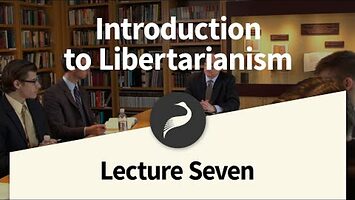Constitution
Encyclopedia
Adopted at a special convention that met in Philadelphia the summer of 1787 and then ratified by state conventions during the years 1787–1790, the U.S. Constitution is the second constitution of the national government of the United States and for over 200 years has provided the principal American model for limited constitutional government under the rule of law.
By the mid-1780s, many Americans had become quite unhappy with the first national constitution, the Articles of Confederation. The Articles had created a national government with limited powers, vested in a Congress, but the state governments retained most powers, including the power to levy taxes to pay the expenses of the national government. The impetus for the Constitution arose from a 1786 conference in Annapolis, Maryland, where 12 delegates from 5 states met and adopted a resolution calling for a convention to meet the following year in Philadelphia to make the national constitution “adequate to the exigencies of the Union.”
Between May 28 and September 17, 1787, the Constitutional Convention—with 55 delegates from 12 states, as Rhode Island boycotted the meeting—assembled in closed sessions. Although some prominent revolutionary leaders were absent—including Thomas Jefferson and John Adams, who were in Europe serving as American ambassadors—the delegates included such respected statesmen as Benjamin Franklin, James Madison, and George Washington (who was unanimously elected the Convention’s presiding officer).
The framers of the Constitution incorporated into it various devices for limiting power and safeguarding against its abuse. Those devices included not only the new concept of enumerating powers, but also others that had been incorporated into early state constitutions, such as the separation of powers, checks and balances, and the amending process.
Some of its key structural features, however, resulted from political compromise. The most important of these centered on the bicameral nature of the federal Congress. The structure of Congress was a product of the “Great Compromise” between two competing plans offered early in the Convention: The Virginia Plan would have created a tripartite national government—an executive, a judiciary, and a bicameral legislature with the states represented by population; the third would be possessed of broad powers, including the power to veto state laws. The New Jersey Plan, in contrast, would have retained the basic structure of the Articles of Confederation government—including an equal vote for each state in Congress—but would have allowed the national government additional enumerated powers, including the power to tax imports and regulate trade. The compromise adopted by the Convention followed the structural design of the Virginia plan, but with the enumerated powers scheme of the New Jersey plan; it made Congress bicameral, with states represented by population in the House of Representatives, but of equal voting strength in the Senate.
The separation of powers emerges in the basic organization of the Constitution: Article I vests in Congress all legislated powers “herein granted”—in other words, the powers enumerated in Article I, Section 8 and in a few other provisions in the document; Article II vests in a single executive officer, the president of the United States, “the executive power” and others specifically enumerated in Article II, Section 2; and Article III vests in the federal courts (one Supreme Court and whatever “inferior” courts Congress may establish) “the judicial power,” as defined in Article III, Section 2. The framers did not follow a pure separation-of-powers scheme, however; they supplemented it with the countervailing principle of checks and balances, assigning a portion of each functional power to another branch. Thus, for example, Congress was not given the exclusive power to make laws: The president was granted the power to either sign into law or veto bills passed by Congress. Similarly, two executive powers—the treaty-making power and the appointment power—are not held exclusively by the president, but are shared with the Senate, which is empowered to ratify treaties and to confirm presidential appointments.
Although the Convention rejected a plan to allow Congress to veto state legislation, which had been proposed in the Virginia Plan, in Article VI, it adopted language similar to that proposed in the New Jersey Plan, declaring that the Constitution, federal laws “made in pursuance thereof,” and treaties “made … under the authority of the United States” are “the supreme law of the land” and that judges in every state shall be bound by them. Like the Articles of Confederation, the Constitution also imposed certain limits on the powers of the states—the Article I, Section 10 prohibitions—and in Article IV required each state to give “full faith and credit” to the public acts, records, and judicial proceedings of other states and to give its citizens “all privileges and immunities of citizens in the several states.”
Anticipating hostility to the new constitution in many of the state legislatures, the Constitutional Convention decided to bypass them altogether by providing in Article VII that “the ratification of the conventions of nine states, shall be sufficient for the establishment of this Constitution between the states so ratifying.” Ratification through special conventions whose delegates were chosen by the people of each state was thought not only politically expedient, but also accorded with American constitutional norms that, following the precedent set by the Massachusetts Constitution of 1780, required that constitutions derive their authority directly from the people to ensure they were superior to ordinary government.
Ratification of the Constitution was not easy; the “ordeal,” as one historian has described it, was a hard-fought contest between its proponents (the Federalists) and its opponents (the Anti-Federalists) in many of the state ratifying conventions and in the public debates that preceded them. The Anti-Federalists argued that the Constitution transferred too much power from the states to a federal government. Among their many other objections to the Constitution, the most serious was the absence of a bill of rights.
Although the requisite nine states had ratified the Constitution by late June 1788, many of those states—along with the key states of Virginia and New York, which ratified in June and July 1788—also called for amendments, a bill of rights to the Constitution. When the first federal Congress under the Constitution met in New York in the spring and summer of 1789, it considered a series of amendments first proposed in the House of Representatives by James Madison of Virginia. By mid-September 1789, both houses of Congress had approved 12 amendments to be sent to the states for ratification. Only after that time was the Constitution ratified by North Carolina and Rhode Island, the last of the original 13 states to do so.
By December 1791, 10 of the 12 amendments proposed by Congress in 1789 had been ratified by the legislatures of three fourths of the states, as Article V requires, and so became the first 10 amendments, known popularly as the Bill of Rights. The first eight protect various individual rights, among them freedom of speech and press, religious freedom, the right to keep and bear arms, protections against unreasonable searches and seizures, property rights, the right to a jury trial in both civil and criminal cases, and various procedural safeguards for the rights of the accused. The 9th and 10th Amendments provide general rules of constitutional interpretation designed to solve the problems Federalists maintained would arise from the addition of a bill of rights to the Constitution: the 9th protects against the loss of unenumerated rights, while the 10th explicitly limits the national government to those powers enumerated in the Constitution.
In the 210 years since the ratification of the Bill of Rights, the Constitution has been amended only 17 times. By far the most significant amendments were added after the Civil War: the 13th Amendment, which abolished slavery; and the 14th Amendment, which redefined U.S. citizenship and imposed significant additional limits on state governments to protect the “privileges or immunities” of U.S. citizens, to ensure “the equal protection of the laws,” and to prohibit the rights of “life, liberty, and property” from being denied without “due process of law.” The most recent amendment, the 27th, which limits congressional salary increases, also is one of the oldest proposed, having been among the original 12 amendments recommended by the 1st Congress, and which finally was ratified in 1992 by the requisite three-fourths of the states.
Since the U.S. Supreme Court first declared unconstitutional an act of Congress in Marbury v. Madison (1803), the Court has exercised the power of judicial review, that is, the power to interpret the Constitution and to declare void any laws or governmental acts in conflict with it. Before the Civil War, that power was exercised sparingly. However, following the war and especially during the 20th century, the Court has sometimes aggressively used—and, in the eyes of many critics, abused—its powers of judicial review.
The Supreme Court has had an uneven record in enforcing the Constitution. Although the Court has expanded its protection of certain rights, such as the 1st Amendment protection of freedom of speech, the Court also has virtually eviscerated other constitutional provisions, such as the 14th Amendment’s “privileges or immunities” clause. Since the late 1930s, the Court has followed a double standard of constitutional review under which it has given greater protection to certain preferred personal rights, but less protection to property rights and economic liberty. Moreover, through its broad interpretations of congressional powers to spend money and to regulate interstate commerce, the Court in the late 20th century sanctioned the enormous growth of the national government, far beyond what the Constitution’s framers ever intended or imagined.
Further Readings
Barnett, Randy E. Restoring the Lost Constitution: The Presumption of Liberty. Princeton, NJ: Princeton University Press, 2004.
Cooke, Jacob E., ed. The Federalist. Middletown, CT: Wesleyan University Press, 1961.
Ely, James W., Jr. The Guardian of Every Other Right: A Constitutional History of Property Rights. New York: Oxford University Press, 1992.
Farber, Daniel A., and Suzanna Sherry, eds. A History of the American Constitution. 2nd ed. St. Paul, MN: West Group, 2005.
Farrand, Max, ed. The Records of the Federal Convention of 1787. Rev. ed. 4 vols. New Haven, CT: Yale University Press, 1966.
Kelly, Alfred H., Winfred A. Harbison, and Herman Belz. The American Constitution: Its Origins and Development. 7th ed. 2 vols. New York: W. W. Norton, 1991.
Kurland, Philip B., and Ralph Lerner. The Founders’ Constitution. 5 vols. Chicago: University of Chicago Press, 1987.
Levy, Leonard W., ed. Essays on the Making of the Constitution. 2nd ed. New York: Oxford University Press, 1987.
McDonald, Forrest. Novus Ordo Seclorum: The Ideological Origins of the Constitution. Lawrence: University Press of Kansas, 1985.
Rutland, Robert Allen. The Birth of the Bill of Rights, 1776–1791. Rev. ed. Boston: Northeastern University Press, 1983.
———. The Ordeal of the Constitution: The Antifederalists and the Ratification Struggle of 1787–1788. Boston: Northeastern University Press, 1966.








